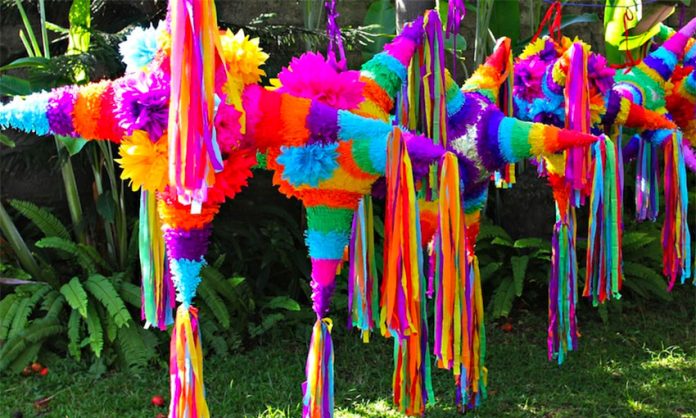Mexico immediately comes to mind when a piñata appears, but how did the tradition begin?
The origin of the Mexican piñata can be traced to an old colonial monastery in Acolman, state of México, which is found today on the northern fringes of the Mexico City metropolitan area. It is a syncretism of two traditions whose association with Christmas came about with the Spanish evangelicalism in the early colonial period.
On the winter solstice, there was an indigenous tradition of breaking an old pot decorated with feathers to honor the birthday of the god Huitzilpochtli. The Spanish had something similar, which originally came from China and was associated with Lent.
The monks at the Acolman monastery redesigned the pot, keeping it and the treats inside but adding seven cones or points, which represented the seven deadly sins. The breaking of the pot was interpreted as overcoming sin and the treats inside as the eternal reward.
There are still piñatas made with clay pots, but these are rare. They are now far more commonly made with paper maché techniques, both for economical and safety reasons.
Piñatas are made all over Mexico, but they remain an important part of the identity of Acolman with some of the best and most experienced piñata makers located here. One of these is the Ortíz Zacarías family, who in 2003 created what was then the world’s largest piñata for the city of Toluca. It measured 12 meters high and almost five meters wide and was decorated by 4,500 schoolchildren from all over the state of México. It has since been surpassed by makers in Toluca, who created one that was 22 meters tall.
To honor this history and to promote Acolman’s role in the making of piñatas, the municipality founded the Feria de la Piñata in 1986. This year’s edition is set for December 19 to 22 and will feature the sale of piñatas by 50 Acolman makers, as well as workshops to show visitors how to make their own.
It also has a number of cultural events, with artists invited from Aguascalientes, Mexico City and even Chile. Each day has a featured popular musical act and there are midway rides, horse racing and the crowning of a piñata queen. Local food specialities will also be available. Recommended are barbacoa, pulque and tlacoyos.
The old monastery is also open to the public.
Source: Milenio (sp), El Heraldo (sp)
